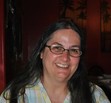I recently re-read Lord of the Rings by J.R.R. Tolkien. I’ve re-read it about once a decade for the past four decades now, and each time I discover something new, something not fully appreciated before, and my admiration continues to grow. This time around, I read it for the language. It has been noted by others that what gives Tolkien’s Middle Earth such richness and depth is all the back stories woven into the tale, all the history and cosmology he created around his epic. But it’s more than just the world-building; there have been many variations and imitations by authors with imagination and the same love of detail that haven’t quite hit the mark – and the missing ingredient, I think, is the love of language. This time around, one of the overlooked gems I found was this sentence:
“The townlands were rich, with wide tilth and many orchards, and homesteads there were with oast and garner, fold and byre, and many rills rippling through the green from the highlands down to Anduin.”
I read that sentence, paused … and read it again. And then I hunted down four of the words in the dictionary, and translated it thus:
“The townlands were rich, with wide patches of cultivated land and many orchards, and homesteads there were with conical kilns for drying hops, malt or tobacco, and granaries, sheep pens and cattle barns, and many small brooks rippling through the green from the highlands down to Anduin.”
Granted my “translation” is a little stilted, but the point is about the language he uses – that’s where the richness lies, what resonates with age and meaning, even if you don’t stop to look up every word that has dropped out of common usage. Tolkien was a linguist, afterall, and in the end it’s all about the language – not only the languages he created for the peoples that inhabit Middle Earth, but the language he uses to tell us about them.
If you’ve thought this book over-hyped or over-rated, read it again for the language. And if you’ve never read it at all, read it now … for the love of language.


 newest »
newest »
 newest »
newest »
 Preferably with a kitty on your lap. :)
Preferably with a kitty on your lap. :)
 Great post, I think the next time I reread LOTR I will just buy the ebooks so I can look up words as I am reading, one of the best perks of an ebook. :)
Great post, I think the next time I reread LOTR I will just buy the ebooks so I can look up words as I am reading, one of the best perks of an ebook. :)





